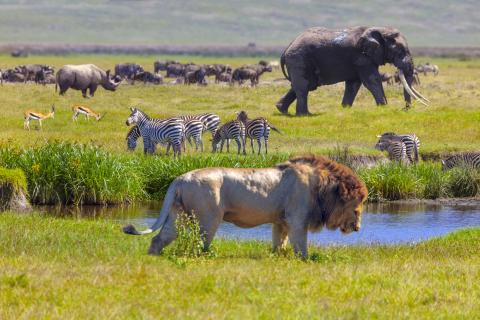Loss of ecosystems incurs higher costs than previously estimated
Across the globe, animal and plant species along with their habitats are disappearing. With this loss, we also lose the 'services' they provide, such as water filtration or crop pollination. An international research team, including Sjak Smulders from Tilburg University, has proposed a new calculation approach to capture these future 'benefits' of nature. The research has been published in the prestigious scientific journal Science.
Governments worldwide are currently exploring new approaches to properly assess the benefits and value of scarce ecosystems. This is intended to help make the consequences of destruction or the benefits of conservation more visible in political decision-making processes. Among these benefits and services are air and water filtration, crop pollination, recreational value for humans, and the existence value of species.
To better reflect these ecosystem services in cost-benefit analyses, governments are converting several nature services into monetary values. As early as 2010, during the 10th Conference of the Convention on Biological Diversity in Japan, the international community agreed that the values of biodiversity needed to be integrated into planning processes.
Our research provides governments with a formula to estimate and utilize the future values of scarce ecosystem services in decision-making

Biodiversity is disappearing
'However', says Moritz Drupp, professor of sustainability economics at the University of Hamburg and leader of the research, 'existing methods for calculating the values of ecosystem services fall short.' Until now, calculation methods have only demonstrated the current monetary value of ecosystem services, without considering the fact that our appreciation for nature increases over time as we become wealthier and ecosystems become scarcer. 'Our research provides governments with a formula to estimate and utilize the future values of scarce ecosystem services in decision-making', explains Drupp.
Economic growth and increasing nature loss play a role in this value adjustment. As growth occurs, income will rise, and so will the prosperity of the world's population - estimated at around two percent per year. Sjak Smulders: 'As incomes rise, people are willing to pay more to preserve nature or enjoy its services. But while our producers are keen to offer more goods and services to higher-income consumers - think of the rapidly increasing supply of Netflix series - our nature cannot provide more services on its own. Worse still, biodiversity is disappearing, and nature is becoming increasingly scarce.'

While producers are eager to create more goods and services, our nature itself cannot offer more services
Sjak Smulders
Value of ecosystems
When these two factors are taken into account, the current value of ecosystem services in current cost-benefit analyses should be much higher - according to the new formula, up to more than 130 percent if only the increase in income is considered. For threatened species as documented in the prominent Red List Index, the value adjustment exceeds 180 percent. Accounting for these effects would therefore increase the likelihood that projects aimed at maintaining ecosystem services would pass a cost-benefit test.
Political decisions can either exacerbate or mitigate biodiversity loss. Therefore, it is crucial that governments can adequately assess the consequences of their decisions, both now and in the future. The proposed method aims to assist in this regard. The research team advises, among others, the UK Treasury, the White House, and the German Federal Environment Agency.
The article has been published on the website of the prestigious scientific journal Science. For more information, please contact Sjak Smulders (j.a.smulders@tilburguniversity.edu) or Moritz Drupp (moritz.drupp@uni-hamburg.de).
